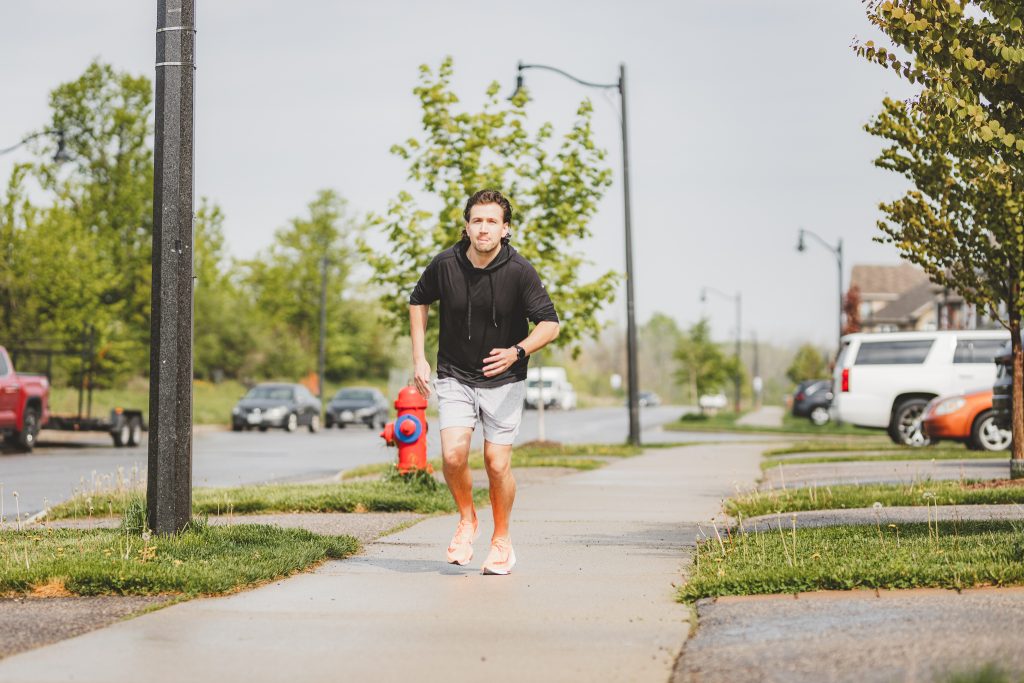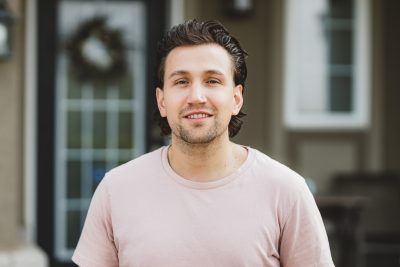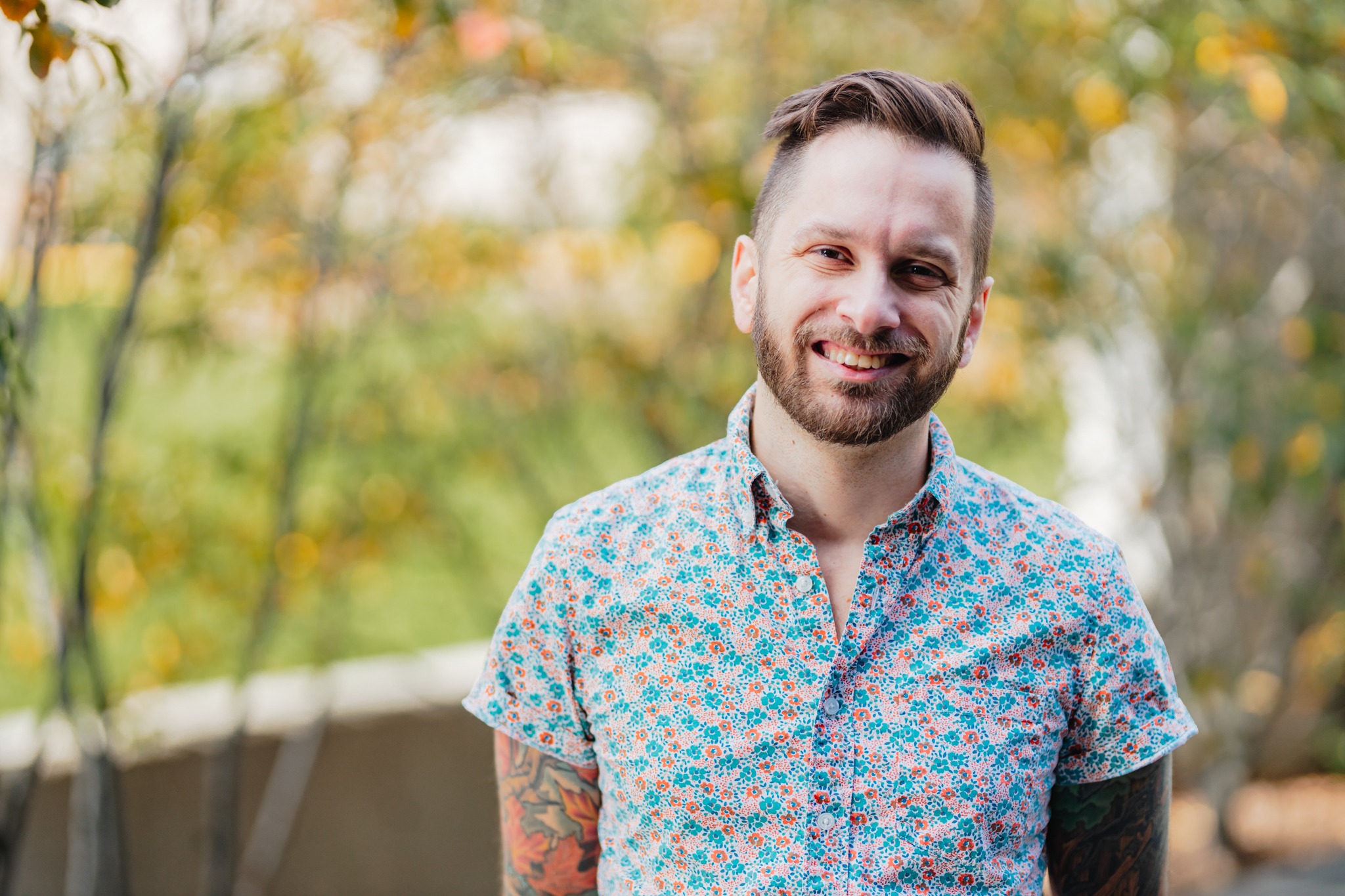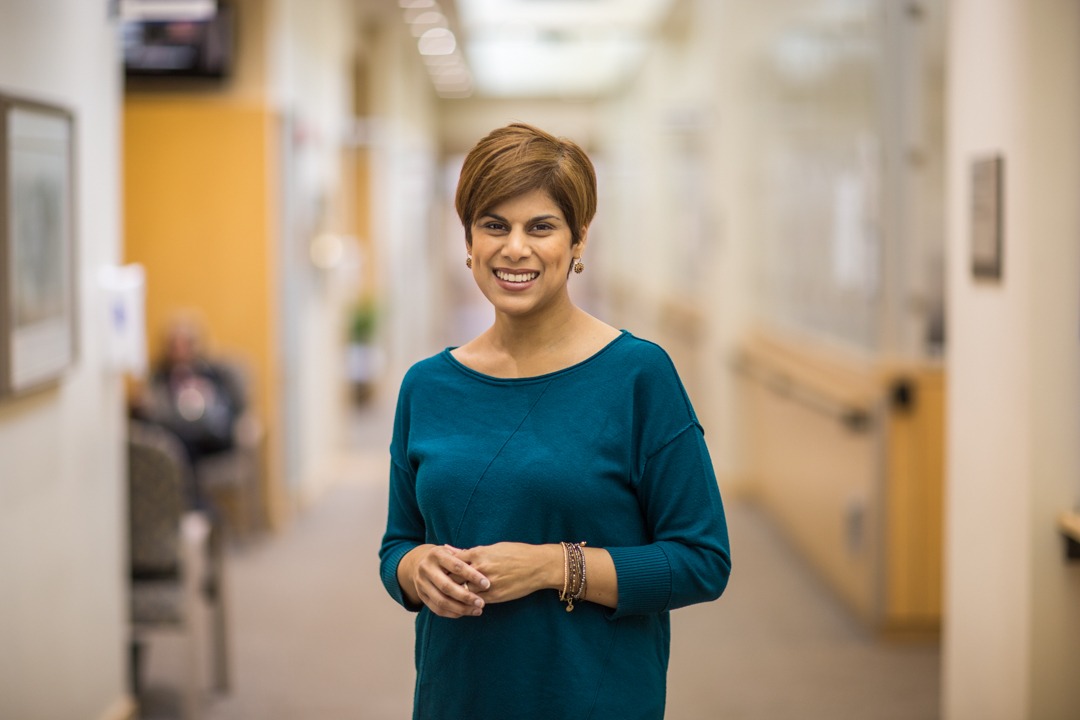
HHS patient promotes testicular cancer awareness
Mike Kiss is a long-distance runner and fitness enthusiast who works out daily. While his commitment to fitness keeps him in great shape, exercising good judgement helped him find testicular cancer early.
Kiss, of Waterdown, was diagnosed just over one year ago after finding a very small lump and alerting his family doctor.
“No one knows your body the way you do.” – Mike Kiss, HHS patient

Mike Kiss encourages men to check for signs of testicular cancer
“I called my doctor right away,” says Kiss, 33, who thought it might be a tiny cyst, but was also aware from public awareness campaigns that a lump could be a sign of cancer. His doctor wasn’t able to see him in person due to the pandemic, but referred him to Joseph Brant Hospital in Burlington for tests, which suggested cancer was likely. Surgery followed in February 2021. He did not need chemotherapy or radiation.
Kiss was then referred to Hamilton Health Sciences (HHS)’ Juravinski Cancer Centre (JCC) for follow-up care, which has been ongoing ever since.
Blindsided by diagnosis
At the time of his diagnosis, Kiss was running anywhere from five to 20 kilometres a day and also working out regularly on his rowing machine. “I thought I was in really good health,” says the product manager for a technology company.
“I exercised every day, made healthy food choices and didn’t drink much alcohol but I still ended up getting cancer.”
Tests showed that his cancer hadn’t spread. However, the subtype he was diagnosed with requires very close monitoring because it has a high risk of spreading.
“Survivorship is a lifelong journey…” – Dr. Aly-Khan Lalani
Kiss sees HHS medical oncologist Dr. Aly-Khan Lalani for regular monitoring that includes blood work, x-rays and occasional CT scans. These visits happened once a month for one year, and then shifted to once every two to three months.

Dr. Aly-Khan Lalani, HHS medical oncologist
Testicular cancer is the most common form of cancer in young men, says Lalani. It’s also one of the most curable cancers, even when it has spread.
Signs include a lump on the testicle that may be painless. Signs can also include a painful or swollen testicle, a feeling of heaviness or aching in the lower abdomen or scrotum, or enlarged lymph nodes in the neck.
Testicular cancer awareness
Kiss is sharing his story to encourage people to act quickly if they suspect a problem with their health.
“No one knows your body the way you do. If you notice something out of the ordinary, it’s important to get it checked out,” says Kiss, who is now back to work and his regular fitness regimen. And he’s getting married in June. “I’m doing all the things I love which is really great, and have a lot to look forward to.”
Mentally, the recovery has been a little tougher. “Putting this behind me will be a longer road,” he says. “I’m still a young guy but I don’t have luxury of feeling invincible anymore.”
Treating the whole patient
“Survivorship is a lifelong journey, and our HHS team is here to provide the care and support that our patients need along the way,” says Lalani.
For example, if patients were treated with chemotherapy or radiation they may need to be monitored over the long-term for later side effects. Some of these patients may also benefit from mental health supports.
“At HHS, we work as an interdisciplinary team in order to optimize a patient’s long-term quality of life,” says Lalani.



